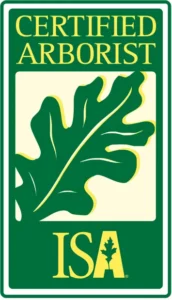Trees add beauty and value to our homes, but when they’re located on or near property lines, they can sometimes lead to tricky situations. Issues like overhanging branches, root encroachment, or shared maintenance responsibilities can create tension between neighbors. However, with open communication and a collaborative approach, you can resolve these challenges while keeping the peace in your neighborhood. Here’s how to handle shared tree problems effectively.
1. Start with Friendly Communication
When dealing with a shared tree issue, the first step is to simply talk to your neighbor. Approach them calmly and politely, keeping the tone of the conversation friendly and collaborative. Avoid accusatory language and focus on framing the discussion around mutual benefits or shared concerns. For example, start with something like:
- “I noticed the branches of the tree near our fence are hanging low. I was wondering if you’re okay with trimming them together?”
- “I’m concerned about the roots from our shared tree. Do you think we could work on a solution to protect both of our yards?”
Respectful communication sets a positive tone and encourages cooperation rather than defensiveness.
2. Understand the Legal Considerations
Before taking any action on a shared tree, it’s essential to understand the legal implications. Laws about tree ownership and responsibilities vary by location, but here are some general guidelines:
- Tree Ownership: A tree on your property is yours to maintain, while a tree that straddles the property line is typically considered joint property.
- Overhanging Branches: Legally, you may prune overhanging branches up to the property line without your neighbor’s approval. However, it’s always better to discuss it with them first to avoid misunderstandings.
- Root Encroachment: If tree roots are causing damage to structures like fences, driveways, or septic systems, both parties may share responsibility for addressing the issue.
Check your local ordinances or consult an arborist or attorney if the situation is unclear.
3. Identify Common Problems and Solutions
Shared trees can bring various challenges, but most of them have practical solutions. Here’s how to handle some of the most common issues:
Overhanging Branches
If branches from a shared tree are encroaching on your property:
- Talk to your neighbor about trimming them back. Suggest hiring a professional arborist to ensure the work is done safely and the tree remains healthy.
- Split the cost of the service if both of you benefit from the pruning.
Root Encroachment
If tree roots are damaging your property:
- Discuss having a professional inspect the situation. An arborist can recommend solutions like root barriers or carefully severing problem roots without harming the tree.
- If repairs are needed (e.g., for fence or driveway damage), consider cost-sharing with your neighbor to keep things amicable.
Shared Maintenance
For trees on property lines:
- Suggest creating a maintenance schedule, such as pruning every few years, to prevent overgrowth or other issues.
- Agree to share costs for upkeep or hazard prevention measures, such as cabling or bracing.
4. Bring in a Neutral Third Party When Needed
If you’re struggling to reach an agreement with your neighbor, involving a neutral third party like a professional arborist can help. An arborist can provide expert advice on the best way to handle issues while preserving the tree’s health. They can also serve as a neutral voice, which can make negotiations easier.
If the disagreement escalates, consider mediation through a homeowners’ association, community board, or professional mediator. Mediation can help both sides express their concerns and find a balanced resolution without resorting to legal action.
5. Keep the Big Picture in Mind
Shared tree problems can feel frustrating, but remember that your relationship with your neighbor is more important than the tree. Keeping emotions in check and focusing on solutions will help prevent small disputes from spiraling into bigger conflicts.
Here are some tips for staying positive:
- Focus on shared benefits of tree care, like maintaining property value or promoting safety.
- Be flexible and willing to compromise when discussing solutions.
- Avoid retaliation, like trimming branches aggressively or removing roots without discussing first. This can create unnecessary animosity.
6. Maintain Good Boundaries (Both Literally and Figuratively)
If you’re landscaping or planting trees close to a property line, it’s a good idea to talk to your neighbor upfront. Choose tree species with non-invasive roots and manageable growth. And always consider the long-term size of the tree before planting—what starts as a small sapling will eventually grow into a major feature of your shared landscape.
Planting strategically and agreeing on tree placement and care can help avoid future conflicts and ensure both yards thrive.
Final Thoughts
Dealing with shared tree problems doesn’t have to create division between neighbors. With open communication, legal awareness, and a cooperative mindset, you can address these issues in a way that benefits both parties and preserves the harmony of your neighborhood. By working together, you can enjoy the beauty and benefits of trees while preventing unnecessary conflict.


















